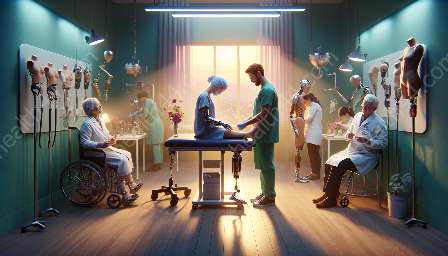Introduction to Prosthetic Joints
In the field of medical devices and equipment, prosthetic joints play a vital role in restoring mobility and enhancing the quality of life for individuals in need. This article will explore the technology, compatibility, and benefits of prosthetic joints, focusing on key examples such as knees and hips.
Understanding Prosthetic Joints
Prosthetic joints, also known as joint replacement devices, are artificial components designed to replace a damaged or diseased joint, such as the knee or hip. These devices are commonly utilized to address conditions such as osteoarthritis, rheumatoid arthritis, and other joint-related issues that impair movement and function.
Prosthetic joints are typically made from durable materials such as metal alloys, high-grade plastics, and ceramics, with the aim of mimicking the natural movement and stability of the original joint.
Compatibility with Prosthetic Devices
Prosthetic joints are often integrated with advanced prosthetic devices to create a seamless and functional connection between the artificial joint and the remaining natural limb. For example, prosthetic knees and hips can be paired with sophisticated robotic components and sensors, allowing for natural movements and improved control for the user.
Advancements in prosthetic technology have led to the development of smart prosthetic devices that can communicate and adapt to the user's gait, posture, and environment, enhancing overall performance and comfort.
Medical Devices & Equipment: Impact on Prosthetic Joints
The synergy between prosthetic joints and medical devices & equipment is evident in the continuous innovation and refinement of prosthetic technology. The integration of cutting-edge medical devices and equipment, such as imaging systems, precision instruments, and 3D printing technologies, has significantly contributed to the customization, accuracy, and longevity of prosthetic joint implants.
Furthermore, the use of advanced medical equipment in surgical procedures has led to improved techniques for implantation, resulting in better outcomes and reduced recovery times for patients receiving prosthetic joint replacements.
Technological Advancements in Prosthetic Joints
The evolution of prosthetic joints has been marked by groundbreaking technological advancements that have revolutionized the design, durability, and functionality of these medical devices. From the development of wear-resistant materials to the incorporation of computer-assisted navigation systems in joint replacement surgeries, the field of prosthetic joints continues to push the boundaries of innovation.
Additionally, the rise of additive manufacturing, commonly known as 3D printing, has enabled the production of customized prosthetic joint components tailored to the specific anatomical needs of individual patients, promoting a higher level of precision and fit.
Benefits of Prosthetic Joints
Prosthetic joints offer numerous benefits to individuals facing joint-related issues, including enhanced mobility, pain relief, and the restoration of independence. By alleviating the symptoms of joint degeneration and promoting better functionality, prosthetic joints contribute to an improved quality of life for those requiring joint replacement intervention.
Considerations for Prosthetic Joints
While prosthetic joints bring significant advantages, various considerations must be taken into account, including long-term durability, implant lifespan, potential complications, and postoperative rehabilitation. It is essential for both patients and healthcare professionals to evaluate these factors carefully to ensure the optimal outcome and long-term success of prosthetic joint replacements.
In conclusion, the world of prosthetic joints, including knees and hips, stands as a testament to the remarkable progress in medical devices and equipment. The seamless integration of prosthetic devices, technological advancements, and the tangible benefits of prosthetic joints underscore the positive impact on individuals' lives.


